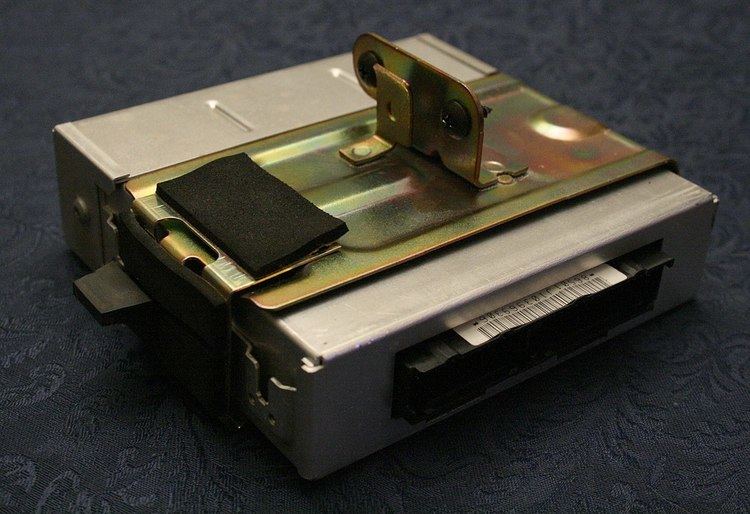 | ||
In automotive electronics, Electronic Control Unit (ECU) is a generic term for any embedded system that controls one or more of the electrical system or subsystems in a transport vehicle.
Contents
Types of ECU include Electronic/engine Control Module (ECM), Powertrain Control Module (PCM), Transmission Control Module (TCM), Brake Control Module (BCM or EBCM), Central Control Module (CCM), Central Timing Module (CTM), General Electronic Module (GEM), Body Control Module (BCM), Suspension Control Module (SCM), control unit, or control module. Taken together, these systems are sometimes referred to as the car's computer (Technically there is no single computer but multiple ones.) Sometimes one assembly incorporates several of the individual control modules (PCM is often both engine and transmission).
Some modern motor vehicles have up to 80 ECUs. Embedded software in ECUs continues to increase in line count, complexity, and sophistication. Managing the increasing complexity and number of ECUs in a vehicle has become a key challenge for original equipment manufacturers (OEMs). Examples of such ECUs include:
Key elements of an ECU
Design and development
The development of an ECU involves both hardware and software required to perform the functions expected from that particular module. Automotive ECU's are being developed following the V-model. Recently the trend is to dedicate a significant amount of time and effort to develop safe modules by following standards like ISO 26262. It is rare that a module is developed fully from scratch. The design is generally iterative and improvements are made to both the hardware and software. The development of most ECU's are carried out by Tier 1 suppliers based on specifications provided by the OEM.
Testing and validation
As part of the development cycle, manufacturers perform detailed FMEAs and other failure analyses to catch failure modes that can lead to unsafe conditions or driver annoyance. Extensive testing and validation activities are carried out as part of the Production part approval process to gain confidence of the hardware and software. On-board diagnostics or OBD help provide specific data related to which system or component failed or caused a failure during run time and help perform repairs.
Tuning
Some people are eager to modify their ECU so as to be able to add more functionality to it. Most ECU's these days however come equipped with protection locks which prevent users of modifying the ECU. The protection locks are made in a way that, when circumvented, triggers DMCA liability. This in effect makes modifying the ECU by circumventing the protection illegal.
